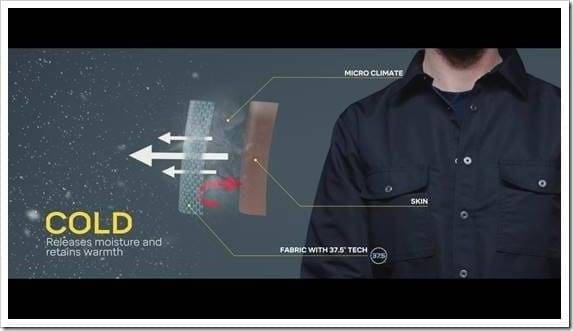Rajendra Suthar C.O.O. at Shyamaarnav spinfab Pvt.Ltd
When I started working for the denim industry 20 years ago experiencing nee type of cloth in Indian Market. A lot has changed since then and is still evolving. I do not mean to say that vintage market does not influence the future of our jeans however today there are further dimensions to designing the denim for the future.
Fashion trends mirror what is happening in the world and denim has been a major part of the fashion instrument to reflect the now as well as the future. Value added denim and jeans cannot merely be “sold” unless insight related to cultural values as well as technological advancements become a part of the story-telling. The question that all the industry is asking is what makes a pair of jeans premium and beautiful for the future?
The reply is its social currency as well as its purpose. These two aspects merge at the design land manufacturing level and the denim supply chain is at a tipping point where designers and technical product developers collaborate to make it happen.
The social currency of a pair of jeans needs well defining. The jeans need to have the relevancy to the cultural wavelength and change. Thus it is essential to understand what is happening globally in terms of tribal consumer attitudes. In an era of abundance the attitudes shift from ownership to sharing as an open network offers possibilities of shared experiences. The contemporary global issues as well as our prediction of the future also define the purposefulness feature of denim. The denim consumer is no copycat and is aware of the world’s political, environmental and economical setbacks. He wears denim as an expression and not because it is a trendy dress code but because it is a statement. This novel consumer is aware of the global trends, technologically integrated, health conscious and desires the sporty elements of a modern life-style.
Depleted resources related to global warming – both cotton and water are set to become luxury commodities – plus a landfill and waste crisis will force the fashion industry to act more responsibly.Sustainability will become a key part of decision-making in consumer purchases and the denim consumer is once again on the front-line. Circular economy will enhance the way the denim industry uses recycling. The sustainability aspect and the relation to nature define the core of the future denim. There is an urge to innovate mimicking the nature as the natural resources get scarier. Synthetic biology provides the means to duplicate what nature offers initially in the lab and then to scale and many industries including fashion have already started to use lab-born products.
Recycled fibers will close the loop and will speak the same language as the environmentally conscious consumers. Lenzing’s Refibra has made an impact at the recent denim shows. Re-newcell will go operational in 2018 and will turn used cotton and viscose into new fibers. To create products made from ocean plastic, fashion brands are working with specialist companies including NY-based Bionic Yarn and Italian firm Aquafil.
Adidas has biodegradable sneaker from Spider Silk, August 2017 saw Stella McCartney partner with San Francisco-based Bolt Threads to add further luxury sustainable fabrics to the fashion brand’s collection. The biotech company uses a clean manufacturing process to create material from natural proteins such as a vegan, yeast-based silk.
Purposeful design has entered the fashion scene and as the supply chain offers options the brands embrace this concept to meet the current and future needs of its consumers. The denim fabric of the future relates to the whole body, the fibers offer the stimulating experiences and energetic interactions. The fabrics move with the body as the body moves with time. The element of comfort will not cease to exist. Climate change will lead to a significant rise in the Earth’s temperature, creating a new focus for the fashion industry linked to maintaining optimum body temperature through the clothes we wear. The demand for season-less, protective and temperature regulating smart fabrics will grow.
Cocona Inc’s 37.5 – Leaders in Climate-Control Clothing: The body’s optimum core temperature is 37.5°C. US-based Cocona Inc’s 37.5 Material Technology uses activated carbon from waste coconut shells and volcanic sand to wick moisture away from the body and maintain that ideal core micro-climate. With impressive results in ‘hard work’ apparel as well as formal office wear, Cocona Inc. currently supplies more than 60 global apparel companies including American workwear brand Carhartt. Cocona’s aim is for 37.5 Material Technology to be the leading brand name in non-proprietary climate-controlling fabric delivery systems. Its marketing highlights the benefits of maintaining this optimum personal micro-climate throughout the cycle of work, play and sleep, and we will see this type of wellbeing-focused textile innovation – particularly aimed at the ‘hard’/outdoor work market – evolving to become even smarter over the next few years.
Extreme heat, caused by climate change, will call for smart apparel and textiles to regulate body temperature throughout the working day. Increasingly fluid workplace scenarios will demand products that are adaptable and multifunctional.The denim industry supply chain lives in the future and learns from other industries such as the food industry to be able to compete and offer innovation to the tech and fashion savvy consumers. Exponential innovation in fashion is happening, as fabrics get smarter, sustainable, responsive and conversational. It is exciting times for an exciting industry where technological developments, social impact ventures, start-up business models, concern for the environment drive the motivation and inspiration to further collaborate and co-create.
Long live denim forever.

